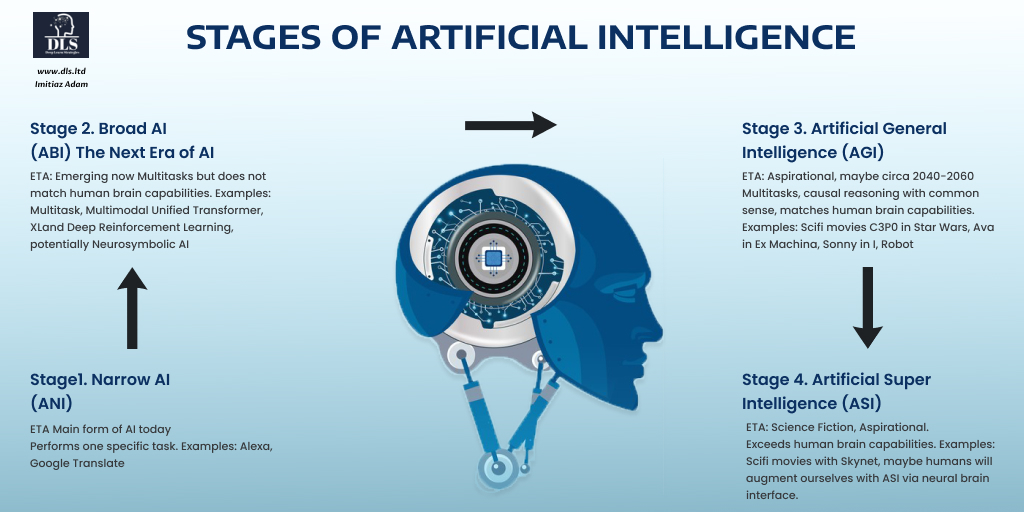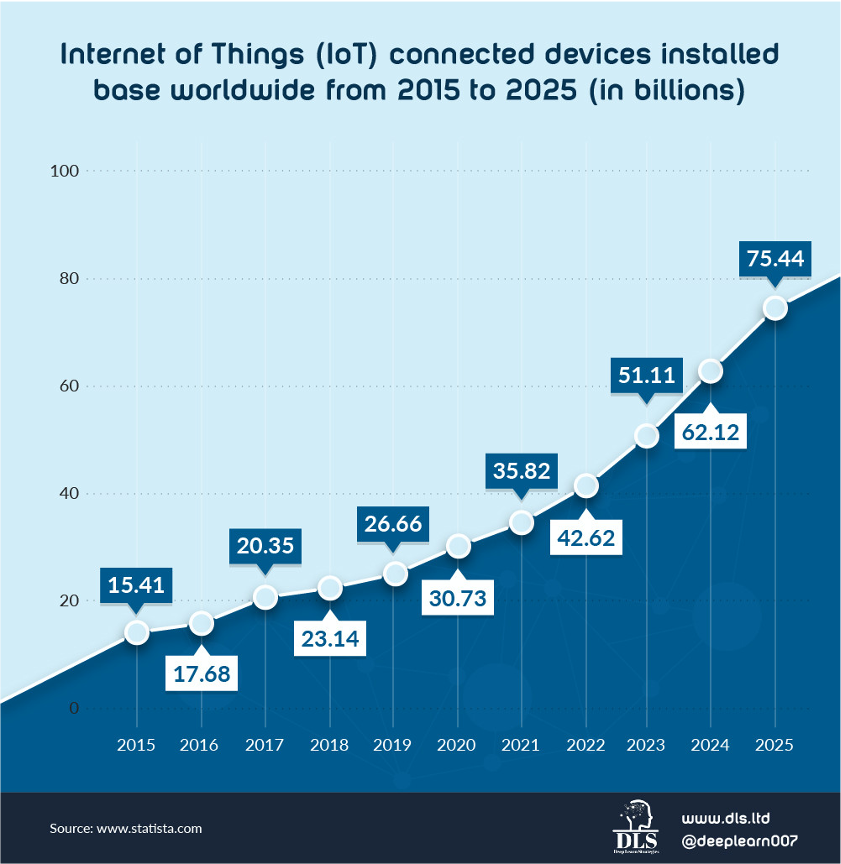An Intro to Deep Learn Strategies (DLS) and our committed focus towards a better world
Introducing Deep Learn Strategies (DLS) work with state-of-the-art AI including next generation Broad AI and our focus on Environment, Social and Governance (ESG) and the Metaverse.
We plan to take you on a journey over a series of articles introducing the state of AI and what we are doing at DLS to advance ESG investment and commitment in particular at a time when companies around the world are facing mandatory regulatory obligations for ESG and disclosure as well as the pressing energy crisis that many in the world are facing this winter along with the need to rapidly advance green energy and storage technology to mitigate these challenges and the role that Artificial Intelligence and advanced technology may play to achieve these objectives.
Let’s start with framing the era of AI that we believe the world will be experiencing across the remainder of this decade.
Artificial Intelligence
Artificial Intelligence (AI) is defined as the area of developing computing systems which are capable of performing tasks that humans are very good at, for example recognising objects, recognising and making sense of speech, and decision making in a constrained environment.
AI has potential to transform vast areas of the economy, however, to date much of the transformative power of AI has been focussed on social media and e-commerce – essentially digital media related sectors.
However, AI is now set to start scaling across the economy and scale across areas such as (a non-exhaustive list):
- Healthcare;
- Financial Services;
- Transportation;
- Smart cities and homes;
- Manufacturing;
- Autonomous robotics including vehicles
In order to achieve this we need the following (non-exhaustive, key areas):
- AI that may multitask rather than perform one task. For example a human driving a car processes language and vision with one brain and multitasks (AI that may truly generalise);
- Linked to the above point, learn on the fly and respond to dynamic and uncertain environments that maybe beyond those that the algorithm encountered in its initial training;
- Engage with causal reasoning (common sense) and explainability;
- Become more energy efficient (for example a human brain can operate on an apple and glasses of water for a day if need be unlike the powerful AI algorithms from the likes of DeepMind such as AlphaGo that required many powerful servers to operate successfully);
- Data security and privacy which is essential in order to scale in areas such as healthcare and financial services;
- Learn from smaller sets of data – a human child can learn from a few examples of what is an apple rather than needing tens of thousands of labelled datasets;
- The above points are key to scaling AI across the economy as edge cases really make an impact in the “real-world sectors” as we AI increasingly moves beyond the virtual world of Digital Media into areas such as healthcare, financial services and the next version of the internet whereby glasses technology may allow for a convergence between the physical and digital worlds with Mixed Reality from the likes of Apple and others.
As a recap for the definitions of Machine Learning and Deep Learning see the article “An into to AI“.
To date we have mostly been in the areas of Narrow AI, however that is changing and we now argue that we are in the era of Broad AI (or Artificial Broad Intelligence, ABI) that will profound and transformative potential for the economy and humanity.
To recap the types of AI:
Narrow AI (Artificial Narrow Intelligence or ANI): the field of AI where the machine is designed to perform a single task and the machine gets very good at performing that particular task. However, once the machine is trained, it does not generalise to unseen domains. This is the form of AI that we have today, for example Google Translate.
Artificial General Intelligence (AGI): a form of AI that can accomplish any intellectual task that a human being can do. It is more conscious and makes decisions similar to the way humans take decisions. AGI remains an aspiration at this moment in time with various forecasts ranging from 2029 to 2049 or even never in terms of its arrival. It maybe that the emergence of new computing solutions such as neuromorphic computing together with dendritic computing and neuromorphic quantum computing in tandem with advancing AI algorithms in the future may enable a pathway towards AGI in the 2030s or 2040s.
Super Intelligence (Artificial Super Intelligence or ASI): is a form of intelligence that exceeds the performance of humans in all domains (as defined by Nick Bostrom). This refers to aspects like general wisdom, problem solving and creativity. It maybe that humans will augment ourselves with advanced AI capabilities in the future (maybe via wireless caps in the era of 6G or beyond) and represent the Super Intelligence at some point in the future. We believe that this remains a more distant aspiration and it is not dealt with in detail in this article.
However there is an intermediate step between Narrow AI (ANI) and AGI (General Artificial Intelligence) as defined by MIT IBM Watson and referred to as Board AI or Artificial Broad Intelligence (ABI).

AGI is highly unlikely suddenly appear out of nowhere. Attaining AGI will be complex process that will take time with incremental steps. Therefore, one may anticipate an intermediary step between Artificial Narrow Intelligence (Narrow AI or ANI) and AGI. As noted both MIT IBM Watson and our team refer to this as the era of Broad AI or Artificial Broad Intelligence whereby AI algorithms may advance beyond Narrow AI and multitask, albeit they do not manage to attain the level of performance of a human brain.
Furthermore, recently there has been excitement and debate about the recent advancements in AI, in particular with Deep Learning (Deep Neural Networks or Artificial Neural Networks, ANNs).
Examples of this include Multitasking, Multimodal Transformers for example UniT from Meta, and Mural from Google.
Indeed Transformers with Self-Attention attained notoriety with GPT-3 and Dall-E.
The Gato model from DeepMind demonstrated the potential of a single AI agent to play games, generate text, process images, and control robotic arms and led to debates about whether “true or generalist AI” may arrive sooner than many consider likely.
Furthermore, generative AI with Dall-E2 has showcased the potential applications for future AI R&D and applications.
In terms of Deep Reinforcement Learning there has also been advances from DeepMind with the likes of MuZero and XLand demonstrate exciting potential for general agents to emerge albeit the complexity of dealing with our real world environment remains.
Furthermore, a key challenge of causal reasoning (giving machines common sense) remains to be resolved. Research with Neurosymbolic AI is showing potential albeit it remains an area of R&D.
Moreover, ABI or Broad AI has vast potential in the emerging Metaverse environment where AI agents will need to deal with both language and vision for a truly engaging user experience.
This article is intended to provide a high level overview of the exciting potential and emergence of ABI, albeit we believe it is highly unlikely that we attain AGI in the 2020s, AI will nevertheless advance in capability and scale across the economy to augment humans and provide exciting new opportunities across key sectors of the economy many of which have increasingly adopted digital during the the Covid pandemic thereby extending the digital footprint.
Indeed as standalone 5G networks scale and the IoT converges with AI to enable the AIoT, Statista predict that 75 billion devices will be internet connected by 2025, a staggering 9 IoT devices per person on the planet!
And IDC Seagate have predicted that we’ll generate 175 Zetabytes of data by 2025, which means almost tripling the entire amount of data that we generated in 2021 with one third of that data to be consumed in real-time (e.g. video, VR, AR). This in turn will necessitate the scaling of Machine Learning to manage and make sense of the data.
IDC Seagate 175 ZB by 2025!
At DLS we are applying cutting edge AI including Broad AI techniques alongside our customised implementation of a low carbon blockchain to create our own Metaverse platform focused on Environment, Social and Governance (ESG) themes with a highly personalised experience. We wait to facilitate the scaling of clean technology and the fight against climate change whilst also furthering social and governance objectives.
Indeed in the interest of the “G” (Governance) side of ESG the issues of data governance and security will be of paramount importance. At DLS we are committed to also applying and further developing techniques such as Federated Learning with Differential Privacy so as to protect the user whilst still enabling Machine Learning to be effectively deployed and personalise the experience.
We’ll be telling you more about the exciting journey that we want to take you on in the era of Broad AI and how we apply advanced technology to assist companies meet their ESG obligations and objects in a series of articles.
